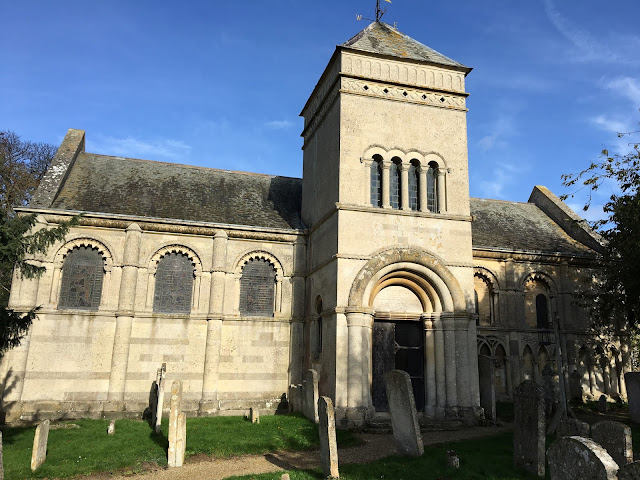St Peter and St Paul is jewel of a church. Small, neat and perfectly formed. It is the work of two periods hundreds of years apart - Norman and Georgian. Both are worth seeing on their own merits, but the Norman work steals the show with some pretty spectacular architecture for a humble village church. The exterior is however Georgian. Not classical but Neo-Romanesque, the work of Samuel Pepys Cockerell. The chancel is a restoration of the original Norman, the nave and the tower & vestry (which project like transepts from the e end of the nave) are wholly the design of Cockerell and are built of the smoothest Neo-classical ashlar. All of dates from the early 1790s when Cockerell was called into restore the dilapidated Medieval church by Miss Eliza Wingfield. Cockerell swept away all the later Medieval work, retained the sumptuous Norman chancel and attempted in his new work to harmonize with the old. The result is at times extraordinary if not bizarre, such as the arch into the porch under the tower. His plan, I think, owes a lot to that of Cormac's Chapel on the Rock of Cashel, County Tipperary, Ireland.
Cockerell's interior is simple and rather noble, making no attempt to compete with the Norman chancel which is on a scale and sumptuousness that is more suited to a cathedral rather a remote country church. An embarass du richesse. The chancel is vaulted with a sexpartite vault (that is six ribs and six webs) - a rare thing for its date, but what stays in the imagination is that incredible chancel arch, not only is it on a gargantuan scale, with the most wonderful enigmatic carvings but it has buckled and deformed with the years in the most alarming manner. Extraordinary, and a treasure.

















No comments:
Post a Comment